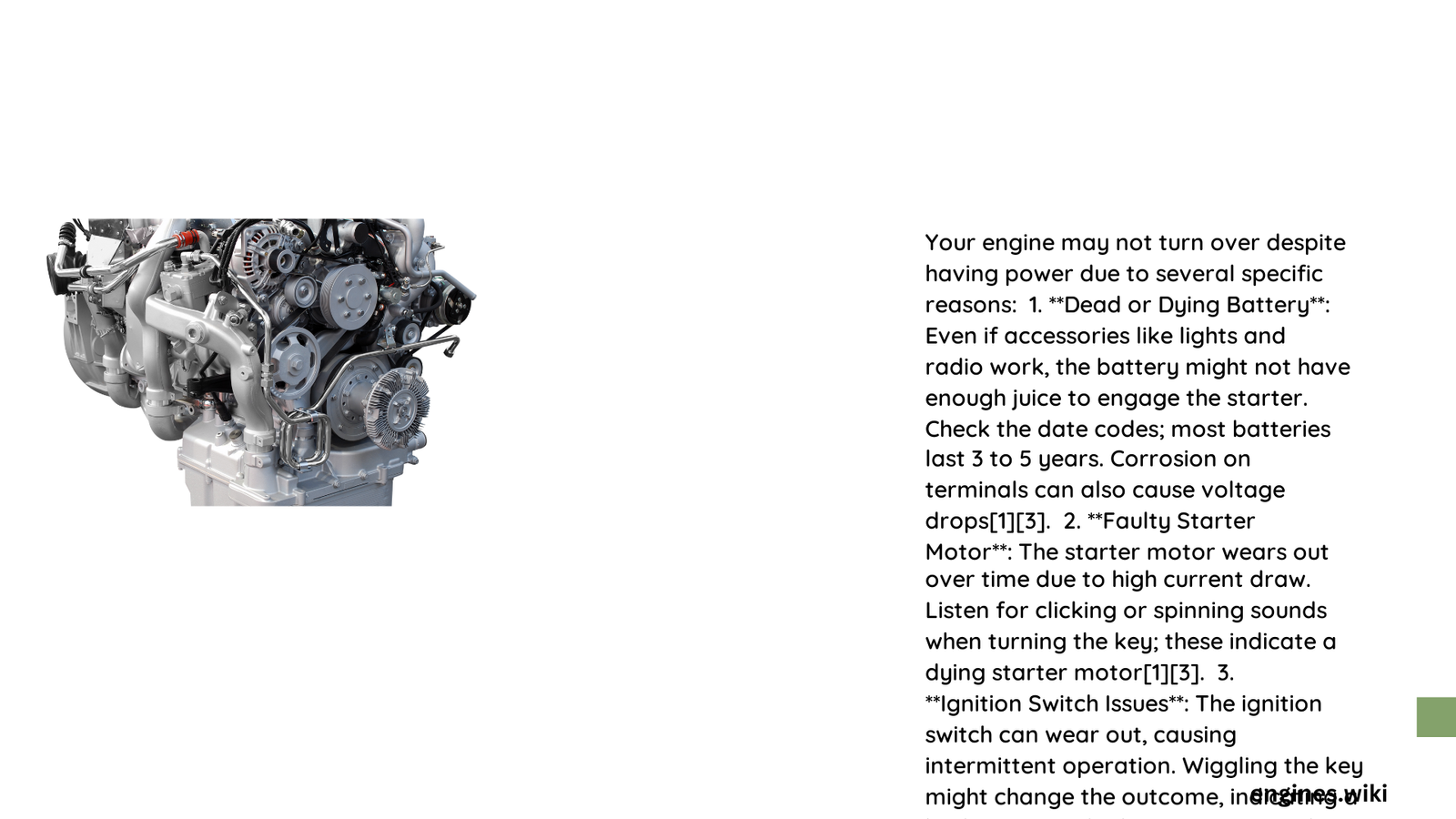When your vehicle’s engine refuses to turn over but electrical systems appear functional, it signals a complex mechanical or electrical challenge that demands systematic investigation. Modern vehicles rely on intricate interactions between battery, starter, ignition, and electrical systems, where a single component failure can prevent engine cranking. Understanding the precise diagnostic steps and potential root causes becomes crucial for efficient problem resolution.
What Causes Engine Failure to Crank Despite Power?
Battery Power: First Diagnostic Checkpoint
How to Verify Battery Voltage Accurately?
- Voltage Measurement Techniques
- Use a digital multimeter
- Check resting voltage
- Perform load testing
| Voltage Range | Battery Condition |
|---|---|
| 12.5 – 12.7V | Fully Charged |
| 12.2 – 12.4V | Partially Charged |
| Below 12.2V | Requires Charging |
What Could Prevent Engine Cranking?
Starter Motor Potential Failures
When battery power exists but engine won’t turn over, critical components to investigate include:
- Starter solenoid malfunction
- Damaged starter motor
- Corroded electrical connections
- Faulty ignition switch
- Seized engine components
Electrical System Diagnostic Approach
How to Perform Systematic Electrical Checks?
- Connection Inspection
- Examine battery terminals
- Check ground connections
-
Verify starter relay functionality
-
Voltage Drop Test
- Measure voltage during cranking attempt
- Identify resistance in electrical pathway
- Detect potential high-resistance connections
Mechanical Barriers to Engine Cranking
What Mechanical Issues Block Engine Start?
- Locked engine bearings
- Damaged timing belt/chain
- Seized pistons
- Excessive internal friction
- Transmission engagement problems
Professional Diagnostic Recommendations
When to Seek Expert Intervention?
- Persistent cranking issues
- Complex electrical diagnostics
- Advanced troubleshooting requirements
- Specialized equipment needed
Cost Considerations for Repairs
Estimated Repair Expenses
| Component | Diagnostic Cost | Replacement Cost |
|---|---|---|
| Battery | $20 – $50 | $50 – $200 |
| Starter | $30 – $100 | $100 – $500 |
| Solenoid | $20 – $75 | $50 – $250 |
Preventive Maintenance Strategies
How to Minimize Future Starting Problems?
- Regular battery health checks
- Annual electrical system inspection
- Timely replacement of aging components
- Maintain clean battery terminals
- Address warning signs promptly
Conclusion: Systematic Problem Resolution
Resolving ‘why won’t my engine turn over but has power’ requires methodical diagnosis, precise electrical measurements, and comprehensive understanding of vehicle systems. While some issues can be self-diagnosed, complex problems demand professional expertise.

